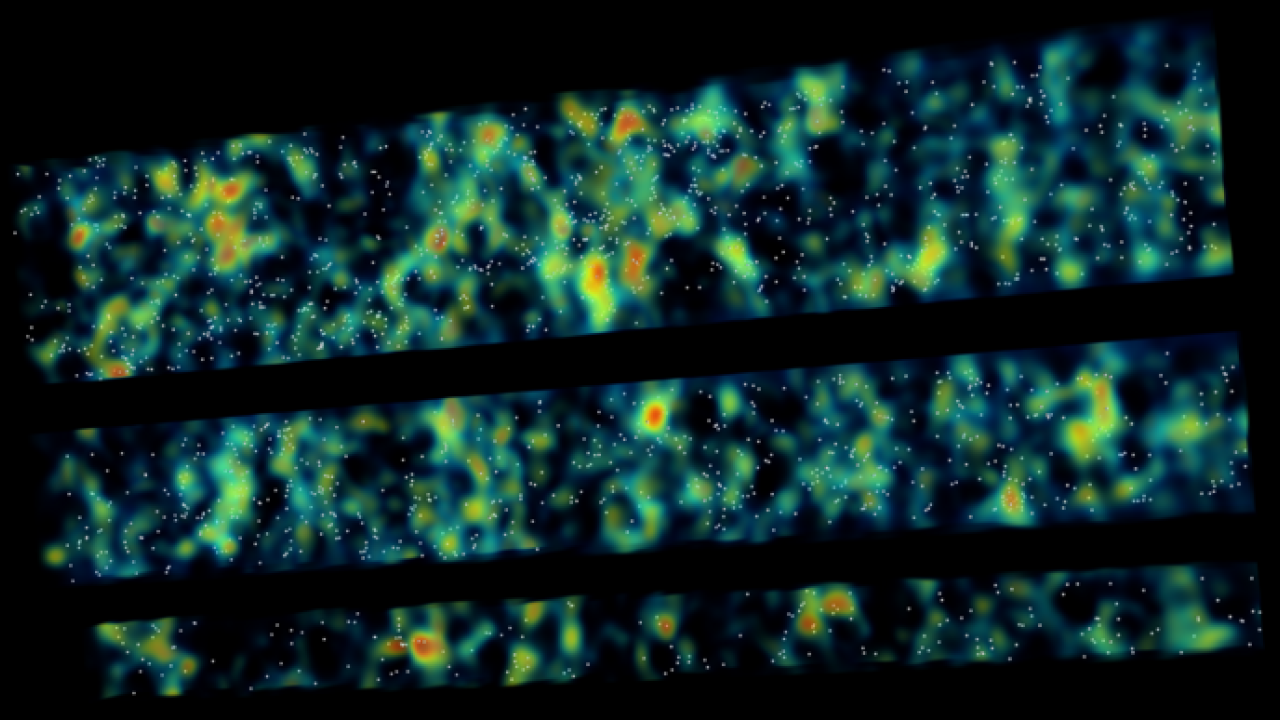The ancestors of galaxy clusters, the largest structures in the universe, have been identified by a team of astronomers including Brian Lemaux, who is affiliated with the UC Davis Department of Physics and Astronomy. Galaxies in the newly identified protoclusters are surprisingly sparse and dim, which may be why they have been so difficult to find until now. The work was published June 15 in Nature.
The first galaxy clusters formed as matter began to clump together after the Big Bang. Galaxies formed within them and eventually, clusters and superclusters contained thousands of galaxies bound together by gravity. Conditions inside the cluster influence the size, shape and color of galaxies.
“We’ve known for a long time that the colors, masses, and shapes of galaxies depend on their cosmic environment, but there’s a lot we don’t know about when and how those differences appeared,” said first author Andrew Newman of the Carnegie Institute of Science in a news release.
Looking for cosmic shadows
Previously, astronomers have searched for galaxy clusters by looking for areas of the sky with an unusual density of distant galaxies. In 2018, Lemaux and Professor Lori Lubin’s group at UC Davis collaborated with an international team to discover the Hyperion super-protocluster, the largest structure discovered to that point at such an distant time.
Taking a different approach, the team used the Magellan telescopes at the Carnegie’s Las Campanas Observatory in Chile to look for the “shadow” of hydrogen gas in protoclusters on even more distant objects.
They were able to identify a number of structures, some of them previously unknown. They were surprised to find that these protoclusters appeared to have fewer galaxies than would be predicted from their dark matter content. They inferred that about half of the expected galaxies are just too dim to be visible in their survey, probably an effect of the protocluster environment.
The team plans to conduct future surveys to locate and study the missing galaxies and test the findings against a larger sample of protoclusters. Lubin’s group at UC Davis will be involved in that follow up work, which will make use of the Subaru telescope and W. M. Keck Observatory in Hawaii as well as images from the Hubble Space Telescope, Lemaux said.
Additional authors on the paper are: Gwen Rudie, Guillermo Blanc, Mahdi Qezlou, Daniel Kelson, Alan Dressler and John Mulchaey, Carnegie Science; Simeon Bird, UC Riverside; Victoria Pérez and Enrico Congiu, Universidad de Chile.
The work was supported in part by the U.S. National Science Foundation and the Chilean National Research and Development Agency.
